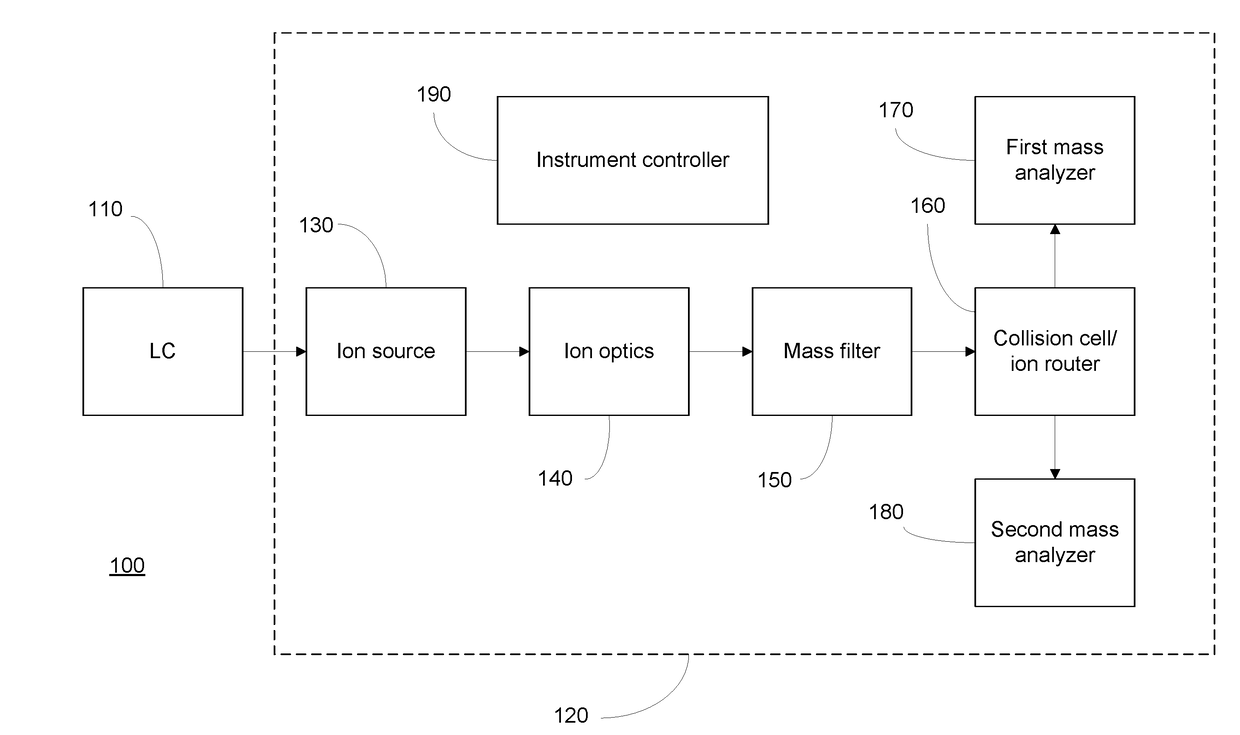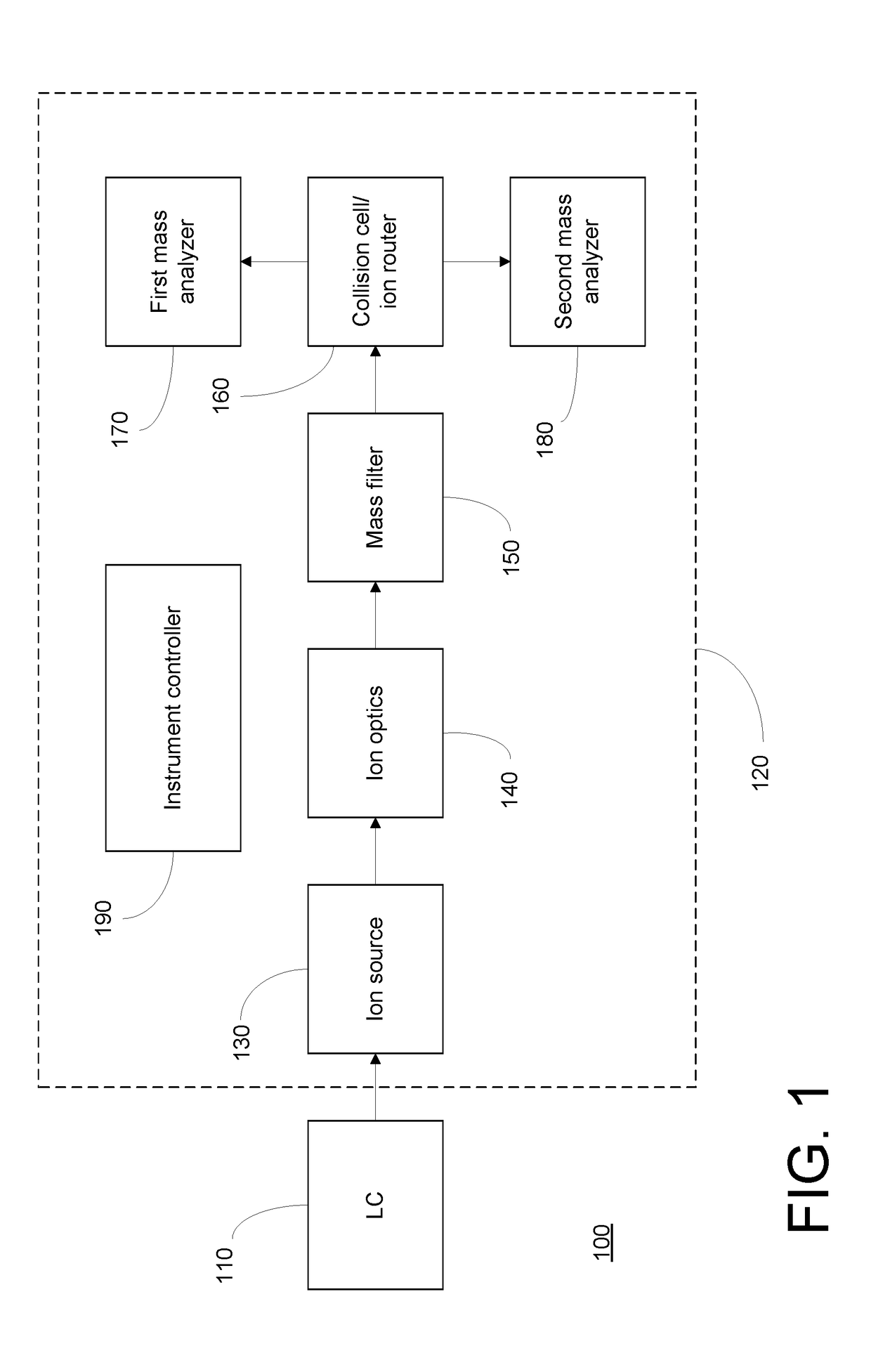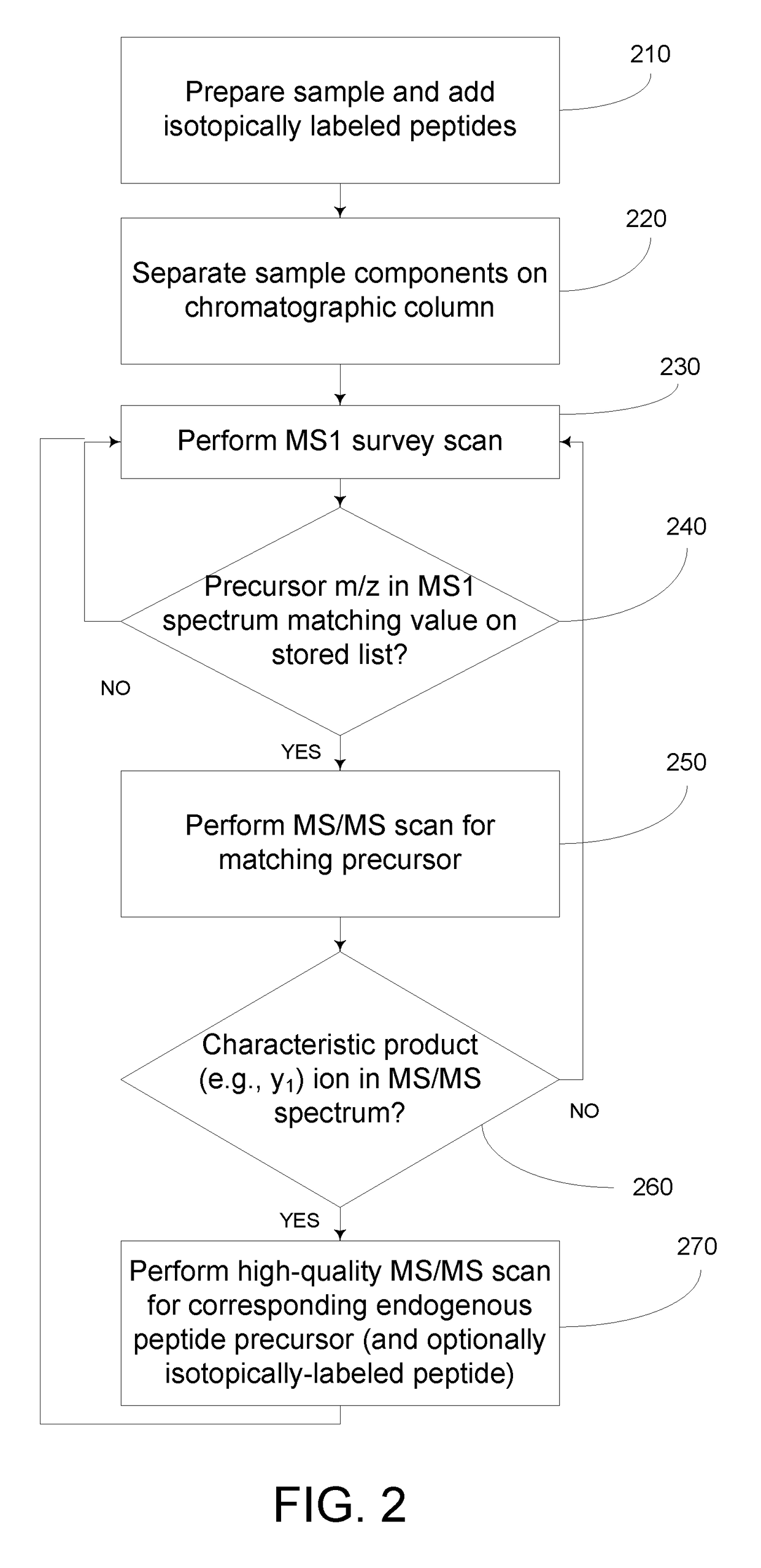Analyzing a Complex Sample by MS/MS Using Isotopically-Labeled Standards
a technology of isotopically labeled standards and complex samples, applied in the field of mass spectrometry, can solve the problems of breadth of compromises, poor depth and reproducibility of this approach, poor overlap between replicate experiments, etc., and achieve good selectivity and high sensitivity
- Summary
- Abstract
- Description
- Claims
- Application Information
AI Technical Summary
Benefits of technology
Problems solved by technology
Method used
Image
Examples
Embodiment Construction
[0016]FIG. 1 depicts an LC / MS system 100 that may be employed to implement embodiments of the present invention. The description of LC / MS system 100 is intended to be illustrative of an exemplary implementation, and should not be construed as limiting the invention to any particular instrument architecture. LC / MS system 100 includes a liquid chromatography (LC) system 110 coupled to a mass spectrometer 120. LC system 110 may be conventionally provided with pumps for loading the sample onto a chromatographic column and for directing one or more solvents onto the column according to an elution gradient to cause components of the sample to be chromatographically separated, such that they are eluted from the column at different retention times. The eluate from LC system 110 is passed to an ionization source 130 of mass spectrometer 120, which produced gas-phase ions from molecules, including biological molecules such as peptides, contained in the sample. The ionization source may be of ...
PUM
| Property | Measurement | Unit |
|---|---|---|
| mass | aaaaa | aaaaa |
| mass | aaaaa | aaaaa |
| mass spectrometry | aaaaa | aaaaa |
Abstract
Description
Claims
Application Information
 Login to View More
Login to View More - R&D
- Intellectual Property
- Life Sciences
- Materials
- Tech Scout
- Unparalleled Data Quality
- Higher Quality Content
- 60% Fewer Hallucinations
Browse by: Latest US Patents, China's latest patents, Technical Efficacy Thesaurus, Application Domain, Technology Topic, Popular Technical Reports.
© 2025 PatSnap. All rights reserved.Legal|Privacy policy|Modern Slavery Act Transparency Statement|Sitemap|About US| Contact US: help@patsnap.com



